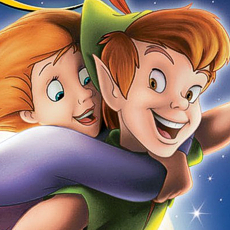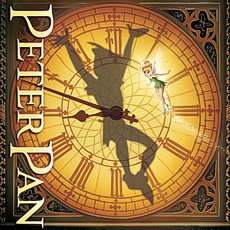DisneyToon Studios (February 15 2002), Walt Disney Home Entertainment (August 20 2013), Blu-ray plus DVD and Digital Copy file, 72 mins, 1080p high-definition 1.66:1 widescreen, DTS-HD Master Audio 5.1 Surround, Rated G, Retail: $36.99
Storyboard:
Wendy’s young but seriously-minded daughter Jane is whisked away to Never-Land, where her adventures with Peter Pan and the Lost Boys reawakens the child within her and reminds her of the magic of faith and trust and pixie dust.
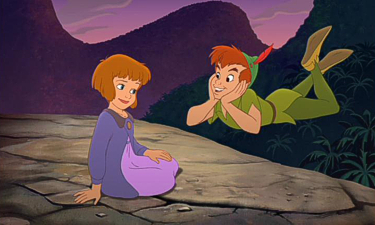
The Sweatbox Review:
Although by any stretch of the imagination, there was never really a need for a sequel to Walt Disney’s 1953 version of J.M. Barrie’s classic book and stage play Peter Pan, this almost 50-years later follow-up turned out to be not as nearly a pale imitation of an original that some – actually most – of the Studio’s other such direct-to-video titles usually were. In fact, an upgrade to theatrical status only placed more pressure on the film to deliver: something Peter Pan: Return To Never-Land unexpectedly and very pleasingly did in the mid-February time slot that Disney claimed as its own for a few years in the early 2000s, releasing several titles otherwise destined for DTV heck to commercial and, in some cases, plausible critical success. Walt’s film was always a favorite of mine growing up, and its association with the characters, whom Barrie bequeathed to the Great Ormond Street Hospital For Sick Children in London, meant that it was some time before any other productions dared to create a new film that would only be compared to a true great.
Steven Spielberg knew it couldn’t be done, and directed his own sequel story, Hook in 1991, that caught up with now older and less magical Peter that needed to reawaken the child within himself, in a film that buried its fairly good concept in an opulent and sometimes overwhelming visual feast and indulgent length. That film seemed to open up the doors to new filmmakers taking their inspiration from Barrie’s original: there were new Pan adventures told, though books and film (most notably a live-action feature that served more as a prequel to Hook in translation even though the two are officially unrelated), and since Return To Never-Land the fairy sprite Tinkerbell has found herself the star of her own DTV series…and one that boasts quality production values that lift each latest installment to new heights comparable or better than most other animation studios choose to release as primary product.
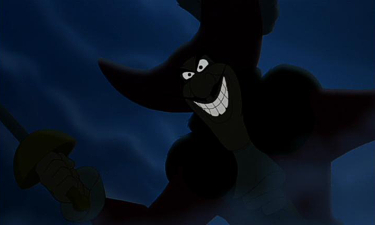
As a huge fan of Walt’s 1953 film, I can now appreciate the modern-day need to balance art with commerce and generate new stories from older properties. Some should never be touched, of course (even though they often are!), and it never fails to amaze me which are picked for new treatment. In this case, Return To Never-Land represented, at a time before Bambi II, the earliest Walt-era classic to get the DTV sequel treatment, and when I first saw it I was ready to tear it apart. I’d memorized Peter Pan from an unofficial VHS that my Dad had brought home in an attempt to satisfy my insatiable appetite for animation as a child, and I was quite literally “hooked” (sorry)! Even now, Pan holds up as one of the best-looking Disney features of any era, the films of the 50s especially made in that magical time between when the artists had learned and experimented and when animation costs were brought down. Not that the quality suffered: the 60s brought us Mary Poppins, of course, and the classic The Jungle Book.
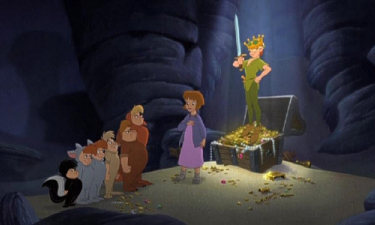
After the renaissance of the 80s, and the dawn of the computer-assisted age, lower costs meant that more time could be spent where it counts – on the animation. Coupled with great storytelling, the new generation of Disney artists proved that they could compare with the old masters. Animation had that lush, polished look again, with individual lines colored in a similar tone to that of the surrounding color. Unfortunately, with systems making animation easier (if not less time consuming), there was also an emergence of more sub-standard work, from all the major studios. Disney led the way with their direct-to-video sequels, often blemishing the very films they attempted (and usually failed) to continue. Toward the end of the DisneyToon Studios boom, the obviously talented artists could be counted on to make a visually appealing film even if the story often lacked, but some of the earlier films (Pocahontas II and…ugh…IIs for Cinderella and The Hunchback Of Notre Dame) were seriously painful and soul-destroying to sit through.

A personal view for me was that I believed it fairly reasonable to let the Studio off with follow-ups to films created by the current staff, such as The Little Mermaid, Toy Story or The Lion King. This was just Hollywood mechanics and a by-product of the contemporary moviemaking system. But mess with the classics, such as Lady And The Tramp, Peter Pan and the eventual Jungle Book and Bambi sequels, and you’re messing with animation history and the memories of some beloved moments in many peoples’ lives. And I was pretty much expecting the same to be true of this new Peter Pan feature as I headed to a theater to catch it in 2002 and where the best thing about doing so was the chance to see the long-shelved short John Henry that was supposedly attached to prints. First off, I was annoyed: there was no John Henry. I was now most certainly not in the mood for a cheap knock-off of one of my favorite animated features. And then, Peter Pan: Return To Never-Land began…
From the opening Disney logo, I was enchanted. Tinkerbell’s glow had been added to the traditional white-on-blue castle logo of the time and, coupled with Joel McNeely’s magically atmospheric music score, the audience is shot straight back to Never-Land. It was as if we’d never left! By the end of Return To Never-Land, the main thing that struck me was how much reverence the creators had paid to the original film, right down to the details in the backgrounds in Wendy/Jane’s room. As far as the animation goes, this was the first outing for Disney’s Australian division, and it’s clear that they pushed for a look that would up the ante for the tots of today, while totally capturing the essence of Walt’s original. The end credits are even adorned with what could have been Mary Blair-styled concept drawings had this been a true 1950s release.
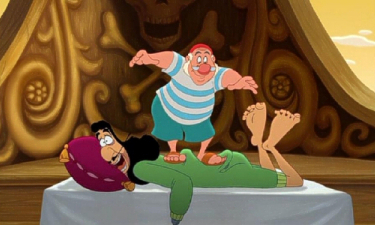
Perhaps predictably, Captain Hook’s ship is now rendered with the help of CGI technology. Though a slightly obvious addition, it does look spectacular, although I still believe that having this concept revealed before seeing the same effect applied to the star-ships in Disney’s next animated film Treasure Planet just a few months later ended up taking away some of the wow factor in that film, the Studio having let one special visual idea out of the bag early. The one drawback to Hook’s ship that I found mildly irritating was that the sails themselves never seem to flap in the wind (something that Treasure Planet’s bigger budget didn’t have any issues with). If anything, it’s a larger feature’s deeper pockets that hinder Never-Land’s visual ambitious, albeit lightly: in an early sequence, more could have been made of the aerial journey through war-torn London, with perhaps some “Pirates versus Nazis” gags aimed towards the enemy’s invasion attempt, but I guess the Mouse House didn’t want to upset the film’s chances in Germany or step too close to any lines (indeed, another missing element is any reference to the Indian natives, which in its attempt not to offend, suggests they have been wiped out instead…something of an own goal more than a solution, me thinks).
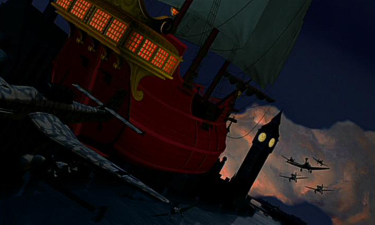
The kaleidoscopic transformation through the night sky of London to Never-Land is, I suspect, an in-joke based on The Wonderful World Of Disney’s main titles, as this is how Tinkerbell would draw the viewer into each week’s episode. Again, McNeely’s terrific music helps this sequence no end, and the addition of snatches of original dialog from 1953 made for a spookily riveting ride. We never actually saw the kids travel to Never-Land in the first film, so this is rather clever in that it does not encroach on any “set standards” and makes a nice departure from the original’s entry to Peter’s home world. Back in Never-Land, all is as we left it, with the exception of the unseen Tiger Lily and the Indians, and the tick-tock of the clock-croc (I guess even crocodiles are protected by PC laws nowadays). Instead, we get a giant octopus, and at the time I originally saw this, I wondered if this was a leftover from the film’s more basic video roots, before it got re-tooled as a theatrical outing. On seeing it again, and comparing it more closely with the original Peter Pan, I was reminded of how cartoony the crocodile was in that film too, so it does fit.
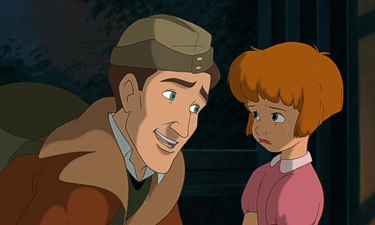
The setting this time is wartime London, where we find an older Wendy, now a mother herself, having to say goodbye to her husband, Edward. He’s been called up for service (leaving rather mistakenly in an American GI truck – the movie’s only fact fault), leaving Wendy in the house she grew up in with her son Daniel and her daughter Jane. The younger of the two, Danny loves to hear of Wendy’s adventures in Never-Land, and of Captain Hook and the Lost Boys. The more practically self-styled Jane claims that she is too old for these childish stories, reasoning that she should be out helping with the war effort, and it’s during one particularly nasty air raid that the menacing shape of Hook’s ship appears – and the Captain is out for revenge! From his experiences in Never-Land, Hook believes that children never grow up, and his men kidnap Jane, thinking her to be Wendy. By the time she breaks free, it’s too late, and the ship has taken her “second star to the right and straight on ’till morning” to Never-Land itself!
Pan and Tinkerbell soon hear about the young girl and, thinking her to be a returned Wendy, before long she’s in Peter’s safe hands, with Hook still bent on justice. Slowly Jane comes around to the idea that it’s okay to be a child, whatever your age, especially when she’s the only one who can help Peter after Hook double-crosses her! Jane’s adventures in Never-Land stand her in good stead when she finally returns home a happier girl altogether, finding her new outlook is welcomed by Danny and leaving the two of them to play out Peter Pan stories of their own, while the adult Wendy herself has the chance to say a final goodbye to an old friend, in a touching sequence that didn’t need to be there but says much about how the filmmakers wanted to wrap up her and Peter’s relationship. It’s a moment that, whoever you ask, will probably be the one that is cited as the most memorable in the film, and certainly the reason that most remember Return To Never-Land with reverence rather than disdain.
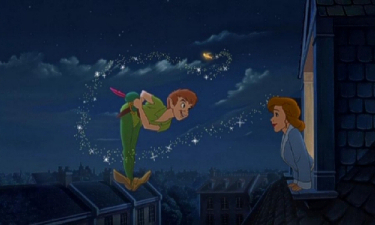
Okay, so the story is fairly lightweight, and at times Pan seems relegated to the sidelines, almost a secondary character in his own film. Then again, this really is Jane’s story anyway, and the movie was originally known throughout production as Peter And Jane. At first, similarities to Spielberg’s Hook are inevitable, but this film plays on its own strengths and can still be seen as a follow-up to Peter Pan, while fitting in before the events of Hook. There are some wonderful sequences, and the wartime bookends are set up and played off with just the right tone, although some of the Pan/Jane sequences seem a little overplayed, but perhaps that’s because we’ve seen this kind of thing before. There are enough twists and turns to keep it interesting, and one extremely nice touch was to include Tinkerbell’s “death” from the original book that was cut back in 1953. This whole plot line hits just at the right moment emotionally and is well planned.
As usual in a quality Disney feature, the music plays a large part again, this time in the form of a song written and performed by Jonatha Brooke. I’d never heard of her to be honest, and she seems to have remained a bit of an enigma since Never-Land’s release, but her main contribution (apart from an early reprise of Second Star To The Right), I’ll Try, contains all the angsty feelings Jane is going through, and is used as in other recent Disney films, without the character mouthing the words. This works very well in context, whereas the other songs, in the Never-Land sequences, are sung by the “cast” in the traditional way. They Might Be Giants fans may be a little disappointed to find that their included So To Be One Of Us is a more familiar Disney “show-tune”, although it’s a fun and rambunctious number. The closing credits features an update of an old classic, Do You Believe In Magic? Composer John Sebastian had originally written the hit after being inspired by a stage version of Peter Pan that he had seen, and when the Disney Studio suggested using it for the new film, he offered to re-tune the lyrics to fit the story and, as performed by BBMak, it’s a great way to end the film on such an up-beat.

Once again, McNeely’s score, while retaining the John Williams Hook sound, also pays tribute to the original film by including the main character themes, especially Sammy Cahn and Sammy Fain’s immortal Second Star To The Right. The voice cast are also largely successful in capturing their characters’ tones: while some of the Lost Boys have changed a bit over the years, Harriet Owen is nicely cast as Jane, and Blayne Weaver’s Pan makes for more than a passable Bobby Driscoll. Corey Burton, after years as “the voice” of Disney scratch tracks, promos and documentaries, finally makes it to the screen as a fully-fledged character actor: his Hans Conried is so absolutely spot on that you’d mostly believe it was the man himself – and with good cause: Burton began his career over 30 years ago performing Hook impersonations! Jeff Bennet is also up there, recreating Smee’s nasally whine pitch-perfectly, and my only question was why they didn’t use Katherine Beaumont as the adult Wendy – she still sounds more like Wendy now than Kath Soucie does in the movie.
Beaumont actually recorded all her lines for the part, before script changes unexpectedly swapped her for Soucie…ahh well, almost perfect. Praise must also go to co-directors Robin Budd and Donovan Cook (an obviously Walt-era influenced soul who also brought much of that charm to the Mickey, Donald and Goofy take on The Three Musketeers), as well as a non-credited Kevin Lima (A Goofy Movie, Tarzan) who supervised, for creating such a rousing adventure and a real return to Disney movies the way they used to be made. I’m with everyone else regarding the “cheapquel” nature of Disney’s DTV product (is it a coincidence that dropping only two letters makes the difference to “dire-to-video”?), but while it can never really compare to the original, and will probably never make any “best of” lists, Return To Never-Land offers us another chance to visit the place where children never grow up. If you look hard enough, put the stigma of the Disney sequels to one side, and suspend that adult disbelief just long enough, you’ll find it’s where you belong too…
Is This Thing Loaded?
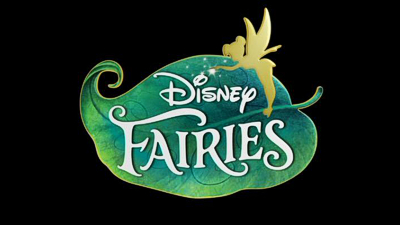
Given Peter Pan’s top-line Diamond Edition status (in name only, it seems, if the evidence of the recycled extras and paltry new selection on that recent disc is anything to go by), it means Return To Never-Land is deemed worthy of an individual release instead of a two-movie collection. Using, as is the norm for Disney’s Blu-ray updates, the last of two previous DVD editions as its starting point, this particular set doesn’t attempt to dazzle us with anything more than a pretty nice main menu and what we’ve already seen when it comes to the extras, other than a selection of five Pixie Previews that appear to be roughly minute-long, self-contained clips promoting the Disney Fairies Tinker Bell series. In HD, they naturally look fine, but there’s little to really get excited about.
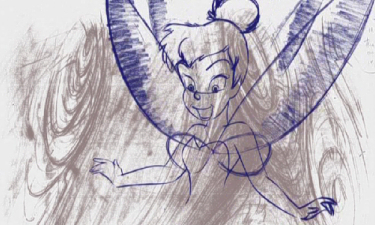
From the previous DVDs, an eight-minute treasure trove of Deleted Scenes loses a producers’ introduction but adds a couple of extra trims, the first being more of an extended rather than deleted scene, featuring Jane’s initial meeting with Hook. A charming little moment that was apparently cut due to time and pacing, it actually plays out very nicely, and as with all these scenes the animation is almost complete in places, with most of it in pencil test and some even ink and painted. An alternative version of Tinkerbell becoming sick doesn’t add much, but fully colored reprises to demo versions of I’ll Try and a Second Star To The Right lullaby are very cool, while an attempt at a hip-hop song for Hook and the pirates certainly is not!
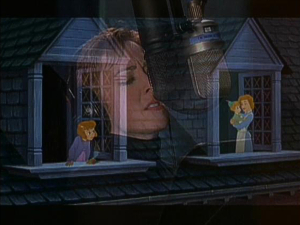
Jonatha Brooke shines in a four-minute I’ll Try Music Video, which begins in danger of being another “making of” with the singer gushing about how great it was to work for Disney, etc, but an opening introductory line soon segues into a decent, if rudimentary, clip of footage of the singer-songwriter in the studio combined with movie shots to accompany her terrific song. On the also included DVD, the music video is repeated along with the Pixie Previews, while Sneak Previews on both discs include The Little Mermaid, Planes, Jake And The Never-Land Pirates and Mary Poppins’ 50th Anniversary Edition, among other promo spots.

Dropped from previous DVDs are a very simple and hardly missed readalong story and a couple of set-top games, the biggest loss being a pretty good DVD-ROM addition: a fully playable three-level demo sampler of Disney Interactive’s You Can Fly! game for which the 3D Never-Land provided a nice touch. Nothing major has been taken away, but then nothing of significance has been added either.
Case Study:
After two so-so designed DVD sleeves, Peter Pan: Return To Never-Land’s BD most pleasingly uses one of its theatrical posters as the basis for the front of its cover – a Disney rarity in itself – and most magical and inviting it looks too. The back of a glossy and embossed slipcase is less exciting, with a bland as they come “Anything is possible when you believe” tagline replacing any critical praise of worth in the spot where such comments are usually quoted, and the Special Edition label also seems to be there just to fill up space. Inside things are pretty regular: just Disney Movie Club and Movie Rewards inserts (also good to redeem for a Digital Copy download) accompanying the DVD and BD discs, and as with the Studio’s other recent offerings, there’s still no mention of aspect ratio tech specs which is risible in itself.
Ink And Paint:
As a 2002 theatrical movie created direct from a digital source, there’s little need for the Studio to sprinkle its not-so-delicate Digital Video Noise Reduction techniques to Return To Never-Land’s images, and thankfully it does look as if the film has gone untarnished in this department, unlike some other recent releases. Presented in its native 1.66:1 aspect ratio, things look solid and clean, even if I do find the fine lines of digital animation, especially of the DTV kind, to be too clinical. Blowing the size up helps soften things and little, which feels more filmic, but there’s no denying that, while the artistry can’t match the Nine Old Men’s attempts from the 1950s, this film marked the period when the eventually named DisneyToon Studios took a step up in terms of excellence that approached and sometimes surpassed the theatrical quality.
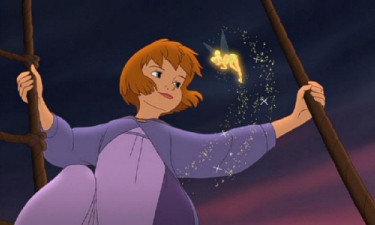
Scratch Tracks:
Accompanying the quality visuals and image transfer is the wonderfully deep and rich mix cooked up by the boys at Buena Vista Sound, here presented unlike the DVD in an uncompressed DTS track. Helping the movie’s production value immensely, the soundtrack plays a very large part in Return To Never-Land’s success, with a mix deserving of the most big budget animation releases. While the story and decade old aural trends may not make for the most aggressive track out there, Never-Land will give your system a nice run through, and this is one that should maybe be enjoyed for its design and suitability to the film itself than for any standout demo sequences, although Hook’s ship in the opening and some of the quieter moments offer up some nice examples. English, French and Spanish dubs and subs are all optional.
Final Cut:
With just over a decade seeing more fast and frivolous fare emerging from the Disney Studio as animation audiences’ tastes have seemingly changed, Peter Pan: Return To Never-Land may seem a little slower paced than when we were first introduced to the film back in 2002. At the time, there was a lot of backlash against the then almost ten-year old Disney video sequel, and the thought of such a film going theatrical (and thus making it a quasi-official release to an original title in the Disney canon) was a move lamented by some. But this is a definite cut above the usual DTV fare, even if this Blu-ray update doesn’t use the opportunity to address it as anything more than that and you could knock another point off for the overblown $37 retail cost when even the standard $30 could be seen as expensive too.
A commentary aside, a new retrospective featurette on why the film managed to break the DTV curse would have been welcome, but then Disney is only interested in updating their back catalog as quick as they can, and secondary releases like these aren’t going to get any real love when even some of the bona fide classics are currently being botched. As much as I’d love to bash another worthless “continuation of a classic”, I just can’t do so: at the end of the day kids will enjoy the movie, and adults will be transported back to a time in their lives when ships sailed in the night, pixies could make you fly, and all you wanted to do was Return To Never-Land. Unexpectedly, this is real magic.
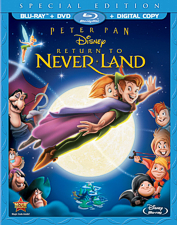 | ||
 |


